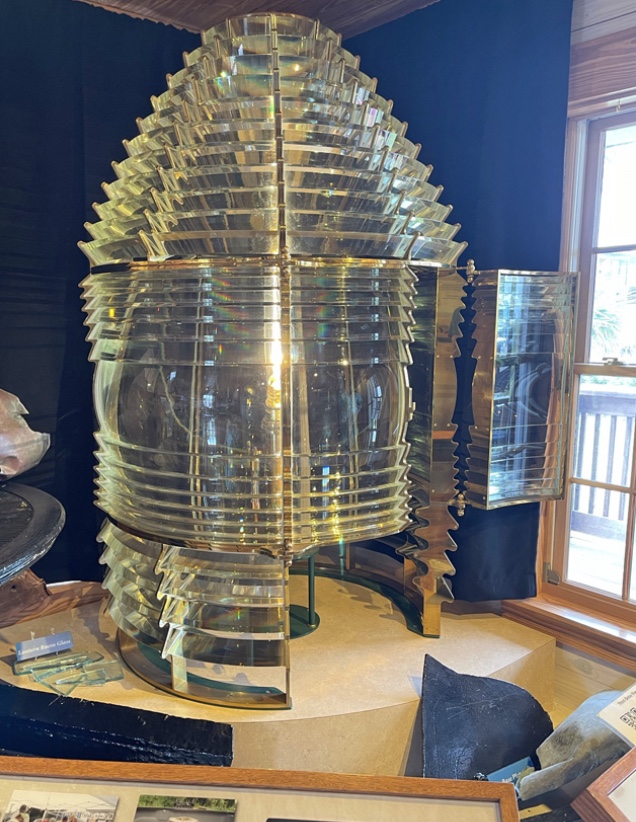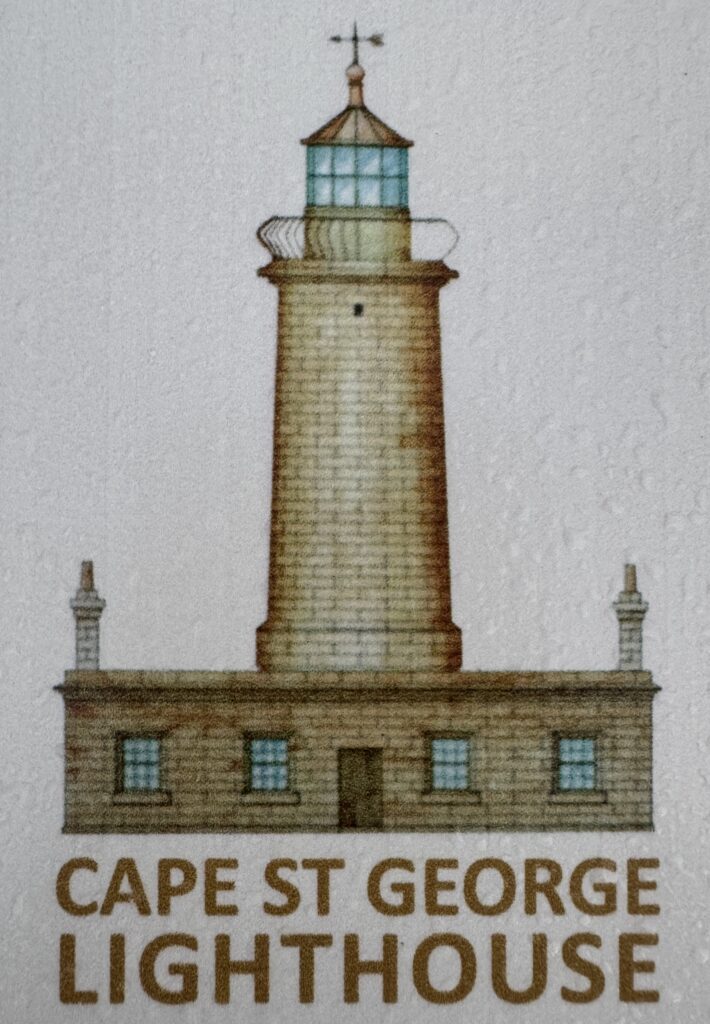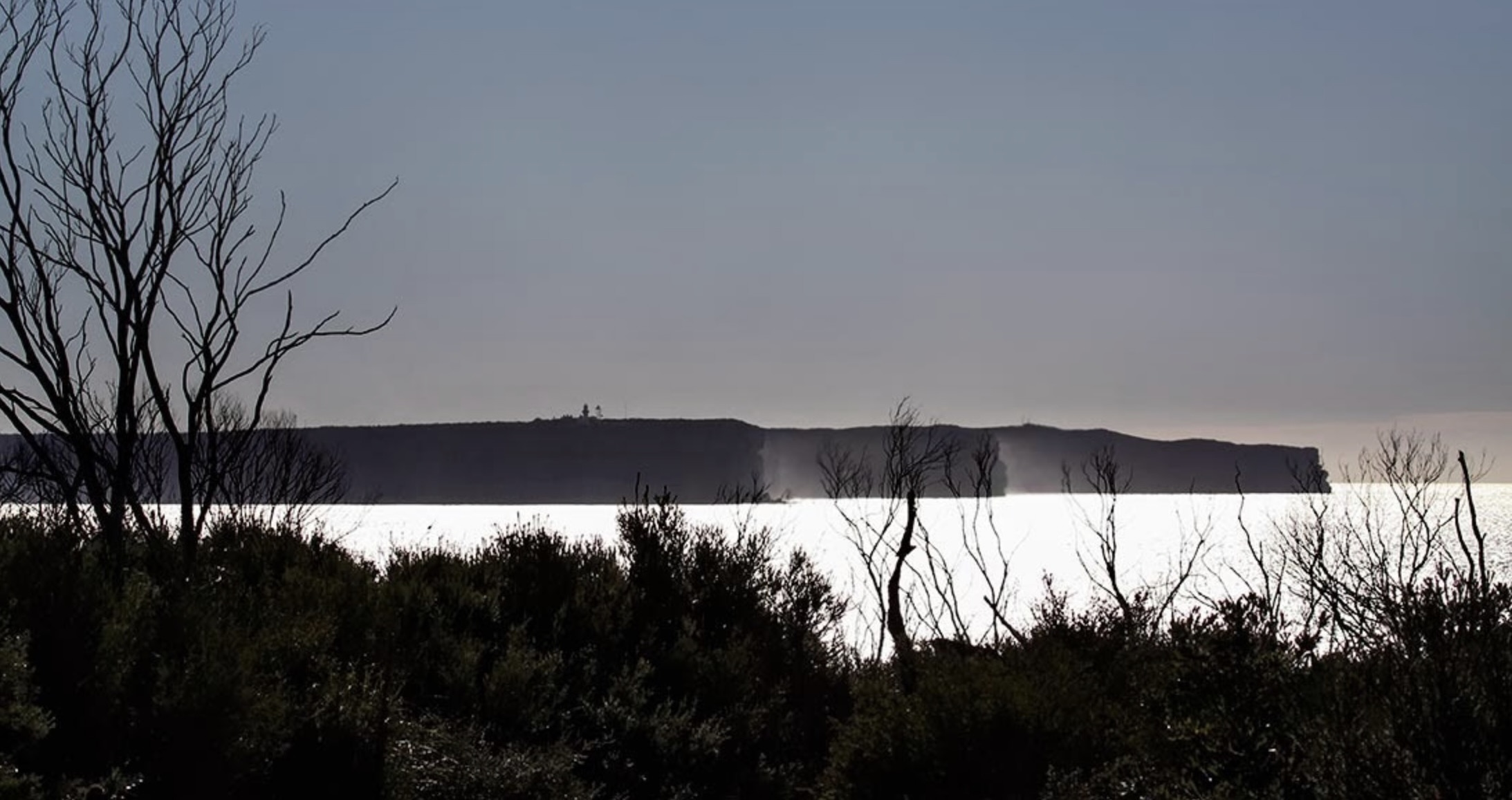
This is undoubtedly the most hauntingly tragic and desolate lighthouse in Australia.
The New South Wales south coast has long been both a lifeline and a graveyard to mariners navigating Australia’s eastern shores. Of all the lighthouses that stand watch over these treacherous waters Cape St. George stands alone as one that embodies both human ingenuity and fallibility in equal measure.
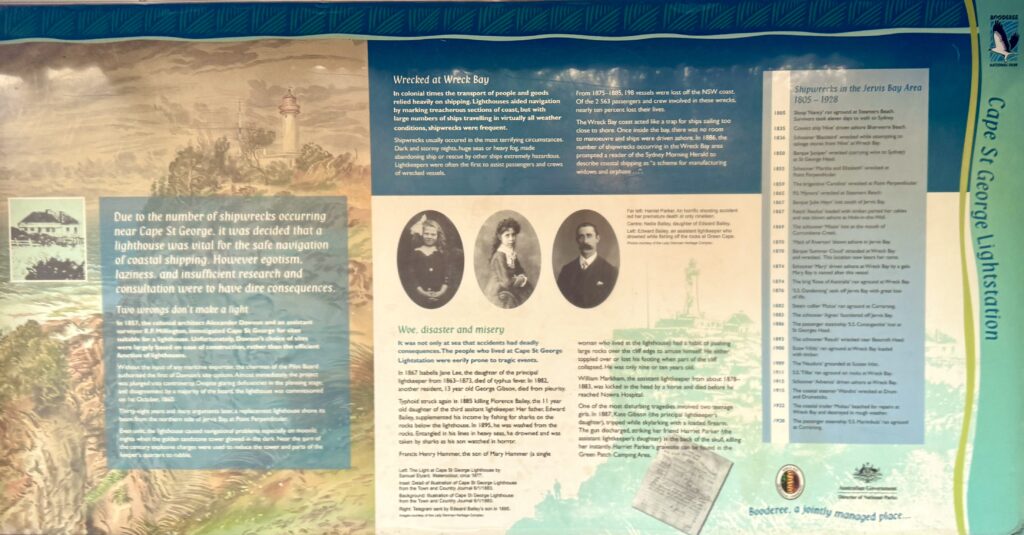
In the mid-19th century, as colonial shipping traffic increased along Australia’s eastern coast, the waters surrounding Jervis Bay claimed vessel after vessel. The jagged rocks and unpredictable currents of this beautiful but dangerous coastline led to repeated calls for navigational aids. After particularly devastating shipwrecks in the early 1850s, colonial authorities finally commissioned a lighthouse for Cape St. George, the prominent southern headland of Jervis Bay.
Construction began in 1857 under the direction of colonial architect Alexander Dawson. For three years, workers laboured to quarry and transport local sandstone to the windswept cape. The design followed the classical colonial lighthouse style—a circular tower reaching approximately 27 meters skyward, crowned with a lantern room housing a sophisticated first-order dioptric lens system. By 1860, the proud structure stood complete, a beacon of safety for all who travelled these waters.


However, soon after the commissioning it became apparent there was a problem. The lighthouse, impressive as it was, stood in the wrong location. Through a series of miscommunications between surveyors, architects, and builders, the structure had been erected approximately four kilometers north of its intended position.
This error proved catastrophic to the lighthouse’s effectiveness. From critical approach angles, the light was partially obscured, while ships in certain positions could not see it at all. What was intended as a solution to maritime disasters instead became a monument to human error—a tragic irony that would plague the lighthouse throughout its operational life.
Despite this fundamental flaw the Cape St. George Lighthouse remained in service for nearly four decades. A succession of dedicated keepers and their families made this remote headland their home, creating a small, isolated community far from the amenities of civilization.


Life at Cape St. George was marked by extraordinary beauty and profound hardship. The keepers’ cottages, built near the tower, offered spectacular ocean views but little protection from the elements. During storms, salt spray would coat windows and walls, while high winds made even routine maintenance dangerous.
Tragedy was never far away. The lighthouse gained a sorrowful reputation after several keepers’ children died in accidents around the precipitous cliffs. Two lighthouse keepers also lost their lives during their service. These incidents, combined with the continued shipwrecks despite the lighthouse’s presence, gave rise to local legends that the cape was somehow cursed—stories that persist in local folklore to this day.
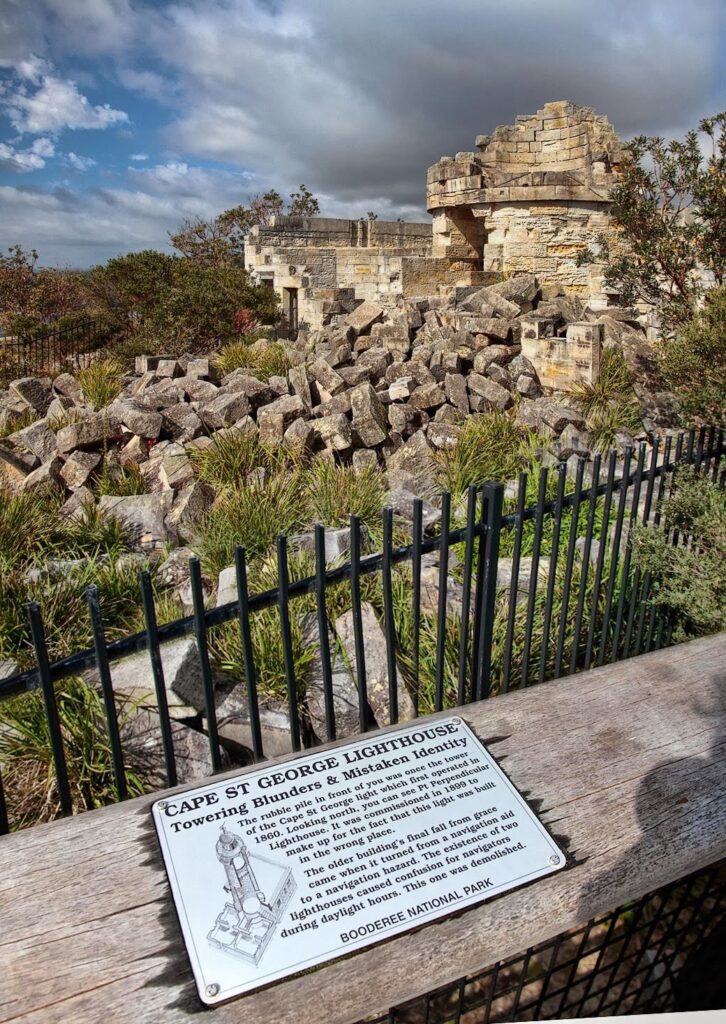
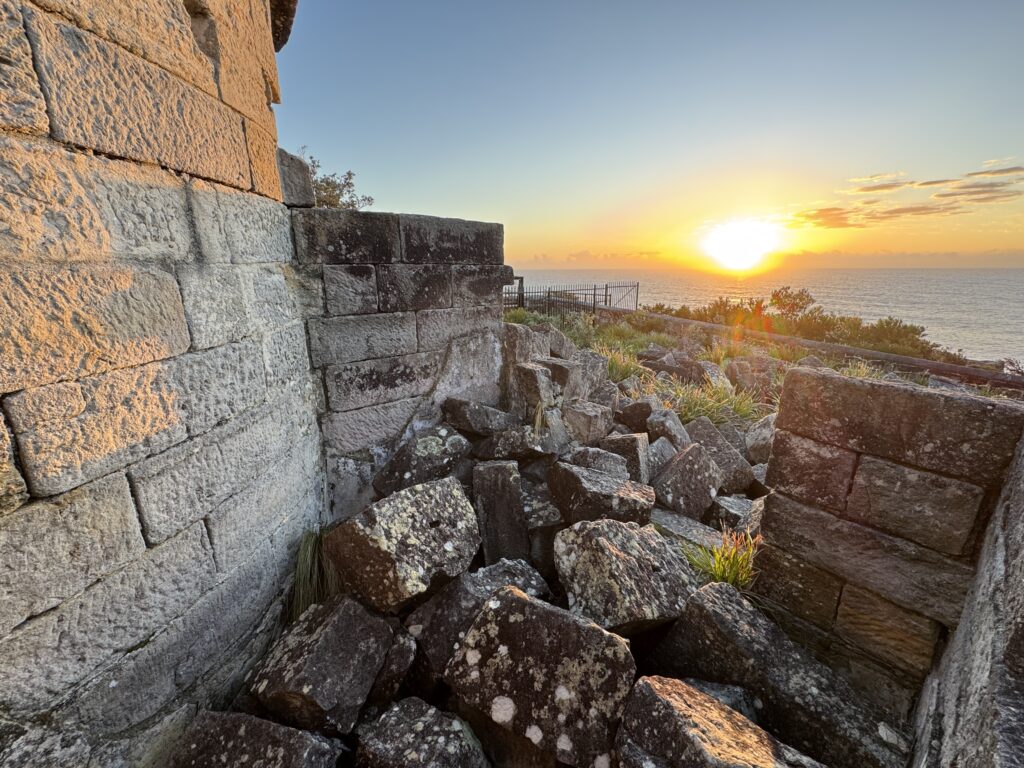
By the 1880s, maritime authorities could no longer ignore the lighthouse’s fundamental limitations. After no less than 32 shipwrecks in the vicinity, including 22 in the appropriately named Wreck Bay, the marine board was forced to reconsider the location and a new lighthouse was commissioned on the northern side of the bay. Plans were drawn for a replacement structure at Point Perpendicular, a location with superior visibility for approaching vessels. In 1899, the new lighthouse commenced operation, and the lamp at Cape St. George was extinguished for the final time.
Even after its decommissioning the abandoned lighthouse became a safety hazard as the light coloured sandstone used in it’s construction meant it was almost luminous, especially on moon lit nights, which further enhanced it’s ghostly reputation and contributed to still more shipwrecks. The lighthouse’s ultimate destruction came from an unexpected source. In the 1920s, naval authorities began using the abandoned tower for artillery practice, significantly damaging the structure. Further demolition followed in the 1940s when concerns arose that the partial tower might still be confused with Point Perpendicular Lighthouse, potentially causing navigational errors.
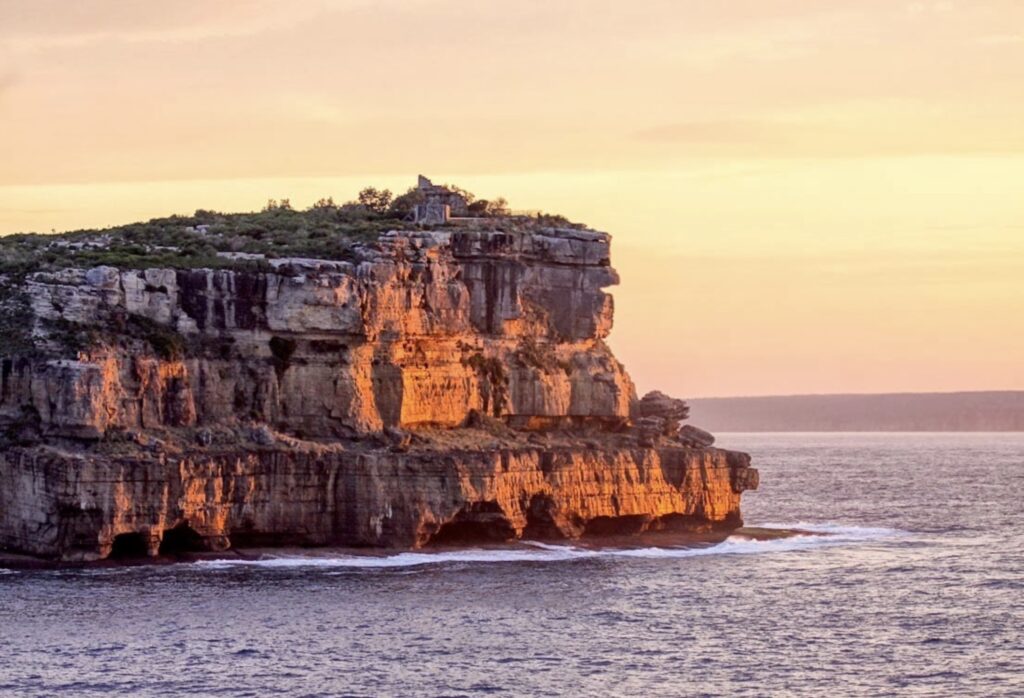

Today, visitors to Cape St. George encounter not a towering lighthouse but haunting ruins scattered across the headland. Stone foundations, partial wall fragments, and the weathered remnants of keeper’s quarters tell a story of ambition, error, and the relentless passage of time.
Now protected within Booderee National Park, jointly managed by NSW Parks and Wildlife and the Wreck Bay Aboriginal Community the ruins continue to attract the curious and those drawn by the spectacular coast and rich indigenous and colonial history.
For those who stand among the weathered stones today, looking out across the waters that have claimed so many vessels over the centuries, the lighthouse’s absence is as meaningful as its presence once was, a ghost that continues to tell its story long after its light has been extinguished.
p.s. The lantern room and lens along with a number of other items, including the weather vane, were removed from Cape St George and installed in the Crookhaven lighthouse which itself is now a ruin and these relics are now on display at the Huskisson Maritime Museum.

